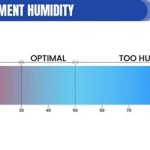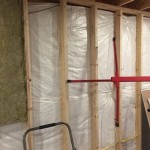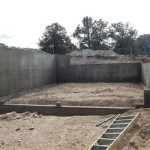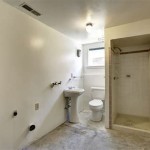How To Carpet Basement Floor
Carpeting a basement floor can significantly enhance the comfort and appeal of the space, transforming it from a cold, utilitarian area into a warm and inviting living area. This project is achievable for many homeowners with the right tools, materials, and a methodical approach. However, it is crucial to address potential moisture issues before beginning the installation to prevent mold growth, damage to the carpet, and health problems.
Before undertaking the project, a thorough assessment of the basement's moisture levels is paramount. Basements are inherently prone to dampness due to their location below ground level. Identifying and resolving any water intrusion is essential for the long-term success of carpet installation. This might involve repairing foundation cracks, improving drainage around the exterior of the house, or installing a sump pump.
The selection of appropriate materials is also critical. Not all carpet types are suitable for basement environments. Moisture-resistant materials, such as synthetic fibers like nylon or olefin, are preferred over natural fibers like wool, which can readily absorb moisture and promote mold growth. Similarly, the choice of underlayment is important. A waterproof or moisture-resistant underlayment will provide an additional barrier against moisture migration from the concrete floor.
Preparation is a significant determinant of the final result. This includes clearing the basement floor, cleaning it thoroughly, and addressing any imperfections in the concrete surface. Uneven surfaces can cause the carpet to wear unevenly and potentially create tripping hazards. Self-leveling concrete compounds can be used to smooth out any dips or cracks in the floor.
Key Point 1: Moisture Mitigation and Remediation
The most crucial aspect of carpeting a basement floor is addressing potential moisture problems. Ignoring this step can lead to significant issues down the line, including mold and mildew growth, unpleasant odors, and the premature degradation of the carpet and underlayment. A comprehensive moisture assessment is necessary before proceeding with any installation work.
Begin by visually inspecting the basement walls and floor for any signs of water intrusion, such as water stains, efflorescence (a white, powdery deposit indicating mineral salts left behind by evaporating water), or mold growth. Pay close attention to areas near the foundation walls, around windows, and where pipes enter the basement.
A simple test to assess the moisture vapor transmission rate of the concrete floor can be performed using a plastic sheet. Tape a square of clear plastic sheeting (approximately 18 inches by 18 inches) to the concrete floor in several locations, ensuring a tight seal. Wait for 24 to 72 hours and then check the underside of the plastic for condensation. If condensation is present, it indicates that moisture is migrating through the concrete, and further investigation and mitigation are required.
Addressing moisture problems might involve several strategies: improving exterior drainage, applying a concrete sealant, or installing a dehumidifier. Exterior drainage improvements could include installing or upgrading gutters and downspouts to direct water away from the foundation, grading the soil around the foundation so that it slopes away from the house, or installing a French drain system to collect and redirect groundwater.
Applying a concrete sealant can help to reduce moisture vapor transmission through the floor. There are various types of sealants available, including epoxy sealants and silane-based sealants. Choose a sealant specifically designed for basement floors and follow the manufacturer's instructions carefully.
A dehumidifier can help to control humidity levels in the basement, reducing the risk of mold and mildew growth. Choose a dehumidifier with sufficient capacity for the size of the basement and ensure that it is properly maintained.
Key Point 2: Material Selection and Preparation
Choosing the right materials is essential for a successful basement carpet installation. As previously mentioned, synthetic fibers such as nylon and olefin are more resistant to moisture than natural fibers. Olefin, in particular, is a good choice for basements because it is highly resistant to water damage, stains, and fading. It is also relatively inexpensive.
The carpet pad, or underlayment, plays a critical role in providing cushioning, insulation, and moisture protection. A moisture-resistant carpet pad is essential for basement applications. Look for pads made from closed-cell foam or rubber, which are less absorbent than traditional felt pads. Some carpet pads are even treated with antimicrobial agents to inhibit the growth of mold and mildew.
Before installing the carpet, the basement floor must be thoroughly cleaned and prepared. Remove all furniture, appliances, and other items from the area. Sweep or vacuum the floor to remove any loose debris, dust, or dirt. Use a concrete cleaner or degreaser to remove any stains, grease, or oil spots. Rinse the floor thoroughly with clean water and allow it to dry completely.
Inspect the concrete floor for any cracks, holes, or uneven surfaces. Fill any cracks or holes with a concrete patching compound. Use a self-leveling concrete compound to smooth out any uneven areas. Allow the patching compound and self-leveling compound to dry completely according to the manufacturer's instructions.
Once the floor is clean and dry, consider applying a concrete sealer. A concrete sealer will help to prevent moisture from migrating up through the concrete and damaging the carpet. Choose a sealer specifically designed for basement floors and follow the manufacturer's instructions carefully. Allow the sealer to dry completely before proceeding with the carpet installation.
Key Point 3: Carpet Installation Techniques
Proper carpet installation techniques are crucial for achieving a professional-looking and long-lasting result. Several methods can be used to install carpet in a basement, including tackless strip installation, direct glue-down installation, and floating carpet tile installation.
Tackless strip installation involves attaching tack strips to the perimeter of the room, creating a secure anchor for the carpet. The carpet is then stretched over the tack strips and attached to the tacks. This method provides a secure and durable installation, but it requires specialized tools, such as a knee kicker and a carpet stretcher. It is generally recommended for larger areas and requires a higher degree of skill.
Direct glue-down installation involves adhering the carpet directly to the concrete floor using a specialized carpet adhesive. This method is suitable for basements with low ceilings, as it does not raise the floor height as much as tackless strip installation. However, it requires careful preparation of the concrete floor and the use of a high-quality adhesive. Ensure the concrete is extremely clean. This technique can be challenging to repair down the line if the carpet becomes damaged or wet. Removal is generally difficult and time-consuming.
Floating carpet tile installation is a relatively new method that involves installing carpet tiles that are not attached to the floor with adhesive. The tiles are typically held in place by their own weight and a friction-enhancing backing. This method is relatively easy to install and is a good option for DIYers. Carpet tiles are also easy to replace if they become damaged or stained. However, this method may not be as durable as tackless strip installation or direct glue-down installation.
Regardless of the installation method chosen, it is essential to follow the manufacturer's instructions carefully. Measure the room accurately before cutting the carpet to ensure a proper fit. Use a sharp utility knife or carpet knife to cut the carpet and underlayment. Be sure to wear safety glasses and gloves when handling these tools. When seaming carpet, use a seam tape and a seaming iron to create a strong and durable seam. Ensure proper ventilation when using adhesives by opening windows and turning on fans.
After the carpet is installed, vacuum it thoroughly to remove any loose fibers or debris. Inspect the installation for any imperfections and make any necessary adjustments. Consider using a carpet protector spray to help prevent stains and protect the carpet from wear and tear.
Proper ventilation is also important after the installation. Open windows and doors to allow fresh air to circulate. This will help to dry the carpet adhesive and reduce any lingering odors. A dehumidifier can also be used to help control humidity levels and prevent moisture buildup.
Finally, it's always a good idea to establish a regular carpet cleaning schedule to maintain the appearance and longevity of the installation. Regular vacuuming, spot cleaning, and professional deep cleaning will keep the carpet looking its best and help to prevent the growth of mold and mildew.

How To Carpet A Basement Floor Diy Family Handyman

What Is The Best Carpet For A Basement Ideas

Best Basement Carpet Ideas Brands Costs And Tips

Carpet Or Hardwood For Your Basement

How To Choose The Right Floor For Your Basement Gc Flooring Pros

Huge Basement Gets Durable Comfy Carpet For Playtime Empire Today Blog

How To Install Carpet On Concrete In One Day

The Best Flooring Options For Your Basement From Forest Llc

Top Reasons To Remove Basement Carpeting Scott Hall Remodeling

Lvt Vs Carpet What S Better For A Basement
See Also








